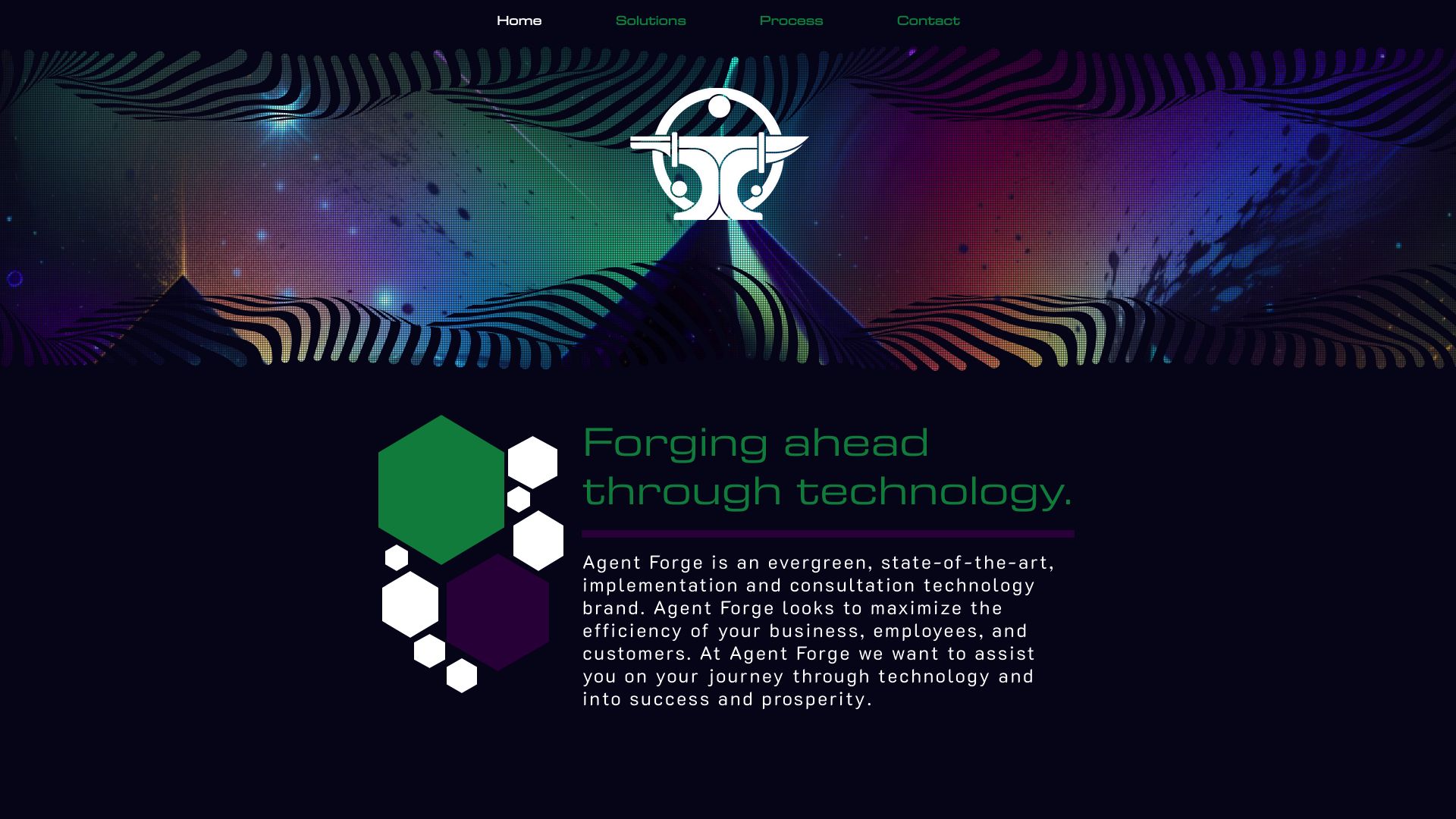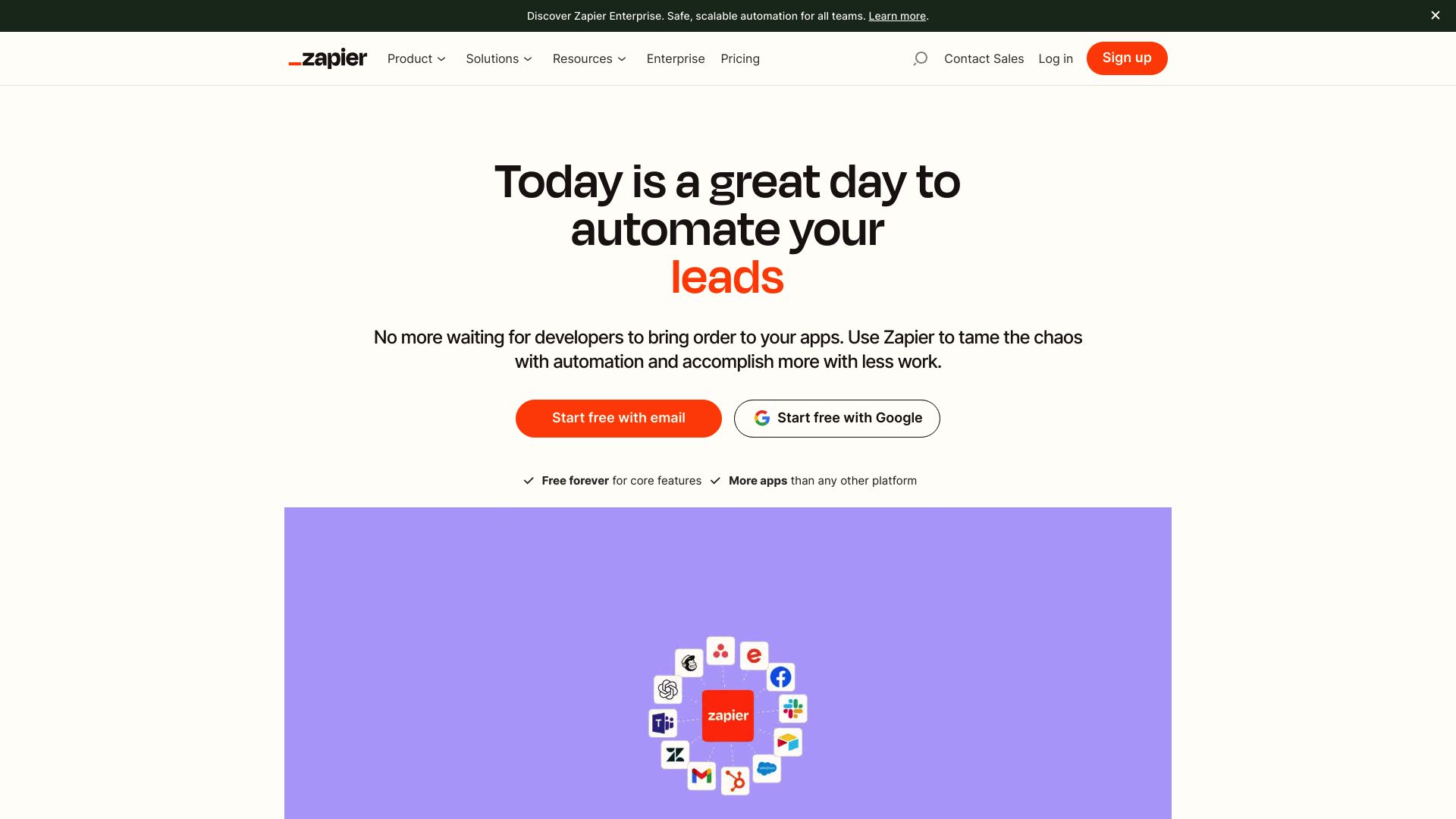Agent Forge vs. Zapier: AI-Driven Automation Compared
The AI landscape offers a myriad of tools for automation and intelligent workflows, each with unique strengths and capabilities. This comparison between Agent Forge vs. Zapier explores Agent Forge, an open-source framework for building AI agents, and Zapier, a widely-used integration platform, alongside SmythOS, a comprehensive AI development environment.
We’ll delve into their core functionalities, ease of use, and potential applications, helping you navigate the choices for AI-powered automation. Whether you’re a developer seeking to create sophisticated AI agents or a business user looking to streamline workflows, this analysis provides the insights needed to select the right tool for your AI and automation needs.
Agent Forge Overview
Agent Forge empowers developers to create and manage AI-powered autonomous agents and cognitive architectures. This open-source Python framework accelerates the development of intelligent systems capable of automating tasks and workflows across various domains.
The platform supports major language models like OpenAI’s GPT, Anthropic’s Claude, and self-hosted options via Oobabooga. Agent Forge integrates ChromaDB for flexible agent memory management, enabling the creation of agents with persistent context and learning capabilities.


Agent Forge excels in orchestrating multi-agent scripts and complex workflows. The framework provides pre-built agent templates to jumpstart development, coupled with a robust prompt engineering system for fine-tuning agent behavior. Developers can easily integrate custom data sources and third-party APIs, expanding the potential applications of their AI agents.
Agent Forge empowers developers to create and manage AI-powered autonomous agents and cognitive architectures. This open-source Python framework accelerates the development of intelligent systems…
While Agent Forge offers powerful tools for AI development, it requires some coding knowledge, positioning it as a low-code rather than a no-code solution. This approach provides greater flexibility for experienced developers but may present a steeper learning curve for non-technical users. The framework lacks a visual builder, which could limit accessibility for those seeking a more intuitive design process.
Agent Forge’s modular architecture facilitates the creation of diverse AI applications, from chatbots and expert systems to task automation tools and intelligent process automation bots. Its extensibility makes it well-suited for long-term AI projects that require ongoing refinement and adaptation. However, the platform’s documentation does not explicitly mention features for model explainability or a dedicated debug mode, which could impact transparency and ease of troubleshooting during development.
Zapier Overview
Zapier streamlines business workflows by connecting over 6,000 apps through automated integrations. Users create custom “Zaps” to link actions across platforms, eliminating repetitive tasks and enhancing productivity. The platform’s intuitive interface empowers both technical and non-technical users to build complex automations without coding.
Zapier streamlines business workflows by connecting over 6,000 apps through automated integrations. Users create custom “Zaps” to link actions across platforms, eliminating repetitive tasks and enhancing productivity.
Zapier’s core strength lies in its vast app ecosystem and user-friendly approach to integration. Marketing teams leverage Zaps to sync customer data across CRMs and email platforms. Sales departments automate lead nurturing processes, while support teams create efficient ticket routing systems. For developers, Zapier offers powerful tools to build custom integrations and extend the platform’s capabilities.


While Zapier excels at app integrations, it lacks advanced AI agent capabilities. The platform doesn’t offer built-in natural language processing or autonomous decision-making features. This limitation may impact users seeking more sophisticated AI-driven automations or conversational interfaces.
Zapier’s pricing model scales based on usage, which can become costly for high-volume automations. Additionally, complex multi-step Zaps may require careful optimization to avoid performance bottlenecks. Despite these considerations, Zapier remains a top choice for businesses seeking to streamline operations through robust, no-code integrations across their software stack.
Feature Comparison
Agent Forge and Zapier offer distinct approaches to automation and AI integration. Agent Forge excels in creating AI-powered autonomous agents using advanced language models, while Zapier focuses on connecting apps through predefined workflows. This fundamental difference impacts their feature sets and use cases.
Agent Forge provides developers with tools to build complex AI agents capable of natural language processing and autonomous decision-making. It supports integration with major language models and offers flexible memory management through ChromaDB. However, Agent Forge lacks a visual builder and requires coding knowledge, limiting its accessibility to technical users.
Zapier, on the other hand, offers a user-friendly visual interface for creating automated workflows between apps without coding. It boasts an extensive library of over 6,000 app integrations but lacks advanced AI capabilities like natural language understanding or autonomous agents. Zapier’s strength lies in its ability to quickly automate repetitive tasks across multiple platforms, making it accessible to non-technical users.
| Agent Forge | Zapier | SmythOS | |
|---|---|---|---|
| CORE FEATURES | |||
| AI Agents | ✅ | ❌ | ✅ |
| Hosted Agents (Dev, Production) | ✅ | ❌ | ✅ |
| Visual Builder | ❌ | ✅ | ✅ |
| No-Code Options | ❌ | ✅ | ✅ |
| Memory & Context | ✅ | ❌ | ✅ |
| Autonomous Agents | ✅ | ❌ | ✅ |
| Explainability & Transparency | ❌ | ❌ | ✅ |
| Debug Tools | ❌ | ✅ | ✅ |
| Multimodal | ❌ | ❌ | ✅ |
| Problem-Solving Capabilities | ✅ | ❌ | ✅ |
| Multi-Agent Collaboration | ✅ | ❌ | ✅ |
| Human-AI Interaction | ✅ | ❌ | ✅ |
| Audit Logs for Analytics | ❌ | ✅ | ✅ |
| Work as Team | ❌ | ✅ | ✅ |
| Bulk Work | ❌ | ✅ | ✅ |
| Agent Work Scheduler | ❌ | ❌ | ✅ |
| Logs & Monitoring | ❌ | ✅ | ✅ |
| SECURITY | |||
| Constrained Alignment | ❌ | ❌ | ✅ |
| Data Encryption | ❌ | ✅ | ✅ |
| OAuth | ❌ | ✅ | ✅ |
| IP Control | ❌ | ❌ | ✅ |
| COMPONENTS | |||
| Foundation AIs | ❌ | ❌ | ✅ |
| Huggingface AIs | ❌ | ❌ | ✅ |
| Zapier APIs | ❌ | ✅ | ✅ |
| All other APIs, RPA | ❌ | ✅ | ✅ |
| Classifiers | ❌ | ❌ | ✅ |
| Logic | ❌ | ❌ | ✅ |
| Data Lakes | ❌ | ❌ | ✅ |
| DEPLOYMENT OPTIONS (EMBODIMENTS) | |||
| Deploy as API | ❌ | ✅ | ✅ |
| Deploy as Webhook | ❌ | ✅ | ✅ |
| Staging Domains | ❌ | ✅ | ✅ |
| Production Domains | ❌ | ✅ | ✅ |
| API Authentication (OAuth + Key) | ❌ | ✅ | ✅ |
| Deploy as Site Chat | ❌ | ❌ | ✅ |
| Deploy as Scheduled Agent | ❌ | ❌ | ✅ |
| Deploy as GPT | ❌ | ❌ | ✅ |
| Scalability | ❌ | ✅ | ✅ |
| DATA LAKE SUPPORT | |||
| Hosted Vector Database | ❌ | ❌ | ✅ |
| Sitemap Crawler | ❌ | ❌ | ✅ |
| YouTube Transcript Crawler | ❌ | ❌ | ✅ |
| URL Crawler | ❌ | ❌ | ✅ |
| PDF Support | ✅ | ❌ | ✅ |
| Word File Support | ❌ | ❌ | ✅ |
| TXT File Support | ✅ | ❌ | ✅ |
Best Alternative to Agent Forge and Zapier
SmythOS stands out as the superior alternative to Agent Forge and Zapier for AI automation. Our platform combines the best of both worlds — Agent Forge’s AI agent capabilities and Zapier’s workflow automation — into a comprehensive, user-friendly solution. SmythOS delivers unparalleled flexibility and power for creating AI-driven applications and automations.
Unlike Agent Forge’s code-heavy approach, SmythOS features an intuitive drag-and-drop interface that makes AI development accessible to users of all technical backgrounds. We offer pre-built components and templates to accelerate development, while still providing the deep customization options advanced users need. In contrast to Zapier’s limited AI capabilities, SmythOS supports cutting-edge language models and autonomous agents that can handle complex, open-ended tasks.
SmythOS features an intuitive drag-and-drop interface that makes AI development accessible to users of all technical backgrounds… while still providing the deep customization options advanced users need.
Our platform shines in its extensive integration ecosystem. While Zapier connects apps through simple triggers and actions, SmythOS enables sophisticated multi-step workflows that seamlessly blend AI, APIs, and data sources. We support thousands of integrations, including all of Zapier’s, plus advanced options like foundation models, Hugging Face integrations, and custom API connections.
SmythOS excels in versatility and scalability. We offer flexible deployment options — as APIs, chatbots, scheduled tasks, or GPT plugins — to fit any use case. Our enterprise-grade infrastructure ensures performance at scale, with features like hosted vector databases and distributed processing that Agent Forge and Zapier lack. Combined with robust security, audit logs, and team collaboration tools, SmythOS provides a complete solution for organizations of all sizes.
SmythOS excels in versatility and scalability. We offer flexible deployment options… to fit any use case. Our enterprise-grade infrastructure ensures performance at scale…
By choosing SmythOS, you’re not just getting a tool — you’re gaining a partner in innovation. Our platform empowers you to harness the full potential of AI, accelerating development and unlocking new possibilities for automation and intelligence in your business processes.
Conclusion
Agent Forge, Zapier, and SmythOS each offer unique approaches to automation and AI integration. Agent Forge empowers developers with tools to build complex AI agents, while Zapier excels in connecting apps through predefined workflows. SmythOS, however, stands out by combining the best of both worlds.
SmythOS’s drag-and-drop interface makes AI agent creation accessible to both technical and non-technical users. Unlike Agent Forge’s coding requirements or Zapier’s limited AI capabilities, SmythOS offers advanced AI features without sacrificing ease of use. Its support for over 300,000 integrations surpasses Zapier’s app ecosystem, providing unparalleled flexibility in workflow design.
For businesses seeking to leverage AI’s full potential, SmythOS emerges as the superior choice. Its ’Create Once, Deploy Anywhere’ approach allows seamless integration across various platforms, from chatbots to APIs. This versatility, combined with features like multi-agent collaboration and advanced debugging tools, positions SmythOS as a comprehensive solution for modern AI-driven automation needs.
Ready to revolutionize your workflow with AI? Explore SmythOS’s diverse range of AI-powered agent templates and start building your first AI agent today. With our risk-free trial offering unlimited agents for 30 days or 10,000 tasks, there’s no better time to get started with SmythOS and unlock the future of workforce automation.
Last updated:
Disclaimer: The information presented in this article is for general informational purposes only and is provided as is. While we strive to keep the content up-to-date and accurate, we make no representations or warranties of any kind, express or implied, about the completeness, accuracy, reliability, suitability, or availability of the information contained in this article.
Any reliance you place on such information is strictly at your own risk. We reserve the right to make additions, deletions, or modifications to the contents of this article at any time without prior notice.
In no event will we be liable for any loss or damage including without limitation, indirect or consequential loss or damage, or any loss or damage whatsoever arising from loss of data, profits, or any other loss not specified herein arising out of, or in connection with, the use of this article.
Despite our best efforts, this article may contain oversights, errors, or omissions. If you notice any inaccuracies or have concerns about the content, please report them through our content feedback form. Your input helps us maintain the quality and reliability of our information.
